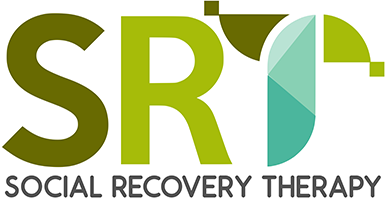Time spent in structured activity as a measure of social disability
Assessing Social Disability – Social disability can be measured in hours per week spent in structured activity. Structured activity is comprised of the following types of activity:
- Paid and voluntary employment
- Education and training
- Childcare
- Housework and chores
- Structured sports and leisure activities
Measuring structured activity is achieved using the Time Use Survey (TUS). This survey was first used by the UK Office for National Statistics in a large population survey . Our group has amended and validated a shortened version of the TUS for use with clinical populations.
Social disability and mental health
Reductions in structured activity are often noticeable for people experiencing complex emerging mental health problems, both before the onset of such problems and often during and after their course. The work of our group has suggested that hours per week in structured activity is a marker of clinical severity:
- Less than 45 hours of structured activity per week is considered a threshold for being at risk of social disability.
- Less than 30 hours per week is considered a threshold for social disability
- Less than 15 hours per week is considered to reflect serious social disability.
Our work has shown a connection between trajectories of structured activity and mental health problems. We have found that amongst young people experiencing a first episode of psychosis, ‘chronic’ low structured activity is predicted by greater residual symptoms of psychosis, depression and social anxiety and greater initial negative symptoms.
Using the Time Use Survey
The TUS is administered as a semi-structured interview which can be delivered in-person or via a telephone or video call. The interview TUS is a technical assessment that must be administered by a trained assessor and takes approximately 15 to 30 minutes. The following considerations are important:
- The TUS is best delivered within the context of an in-person interview in which a positive rapport between interviewer and interviewee has been established
- Care should be taken during the interview as interviewees can experience some distress when sharing their time use, especially in the context of low structured activity
- Visual prompts can be helpful, for example, providing lists of sports and leisure activities
- The TUS prioritises participant recall but informant data can be used – for example, from family members, diaries, mobile phone data – with interviewee permission and any necessary approvals related to research use of these data
- The interviewer must endeavour to elicit as specific responses as possible in reference to activity occurrence and duration
- The interviewer should elicit as much information as possible regarding the nature of activities in order to determine whether they should be counted under structured activity – for example, eliciting the course name, provider, fee-paying status, certification and location of an educational course
Our group is also constructing an online survey version of the TUS and assessment resources.
Additional Resources
Assessing Social Disability:
Research publications LINK
Time Use Survey LINK
Time Use Survey score sheet LINK
Time Use Survey Guidance LINK

